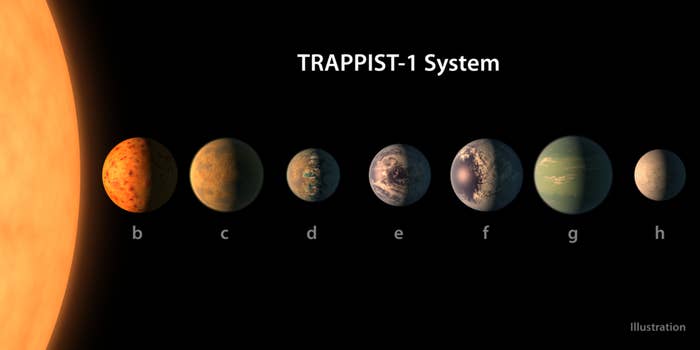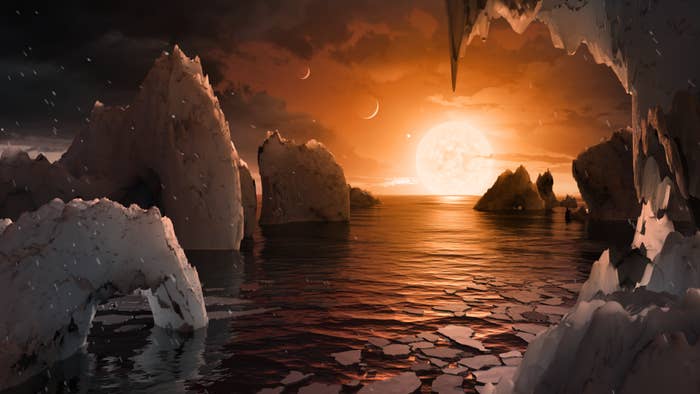
Seven Earth-sized planets with the potential to contain liquid water have been discovered orbiting a dwarf star, and three of them are "firmly located" in the habitable zone, NASA announced Wednesday.
The dwarf star, named Trappist-1, is about about 235 trillion miles from Earth — a relatively short distance for space — and is being heralded as a major step forward in the search for alien life.
“This discovery could be a significant piece in the puzzle of finding habitable environments, places that are conducive to life,” Thomas Zurbuchen, associate administrator of the agency’s Science Mission Directorate, said in a statement. “Answering the question ‘are we alone’ is a top science priority and finding so many planets like these for the first time in the habitable zone is a remarkable step forward toward that goal.”

Using the Transiting Planets and Planetesimals Small Telescope (TRAPPIST) in Chile, researchers last year announced they had discovered three planets in the system. But using other telescopes, they were able to increase that number to seven, setting a new record for the number of "habitable-zone" planets found around a single star outside our solar system.
“I think that we have made a crucial step toward finding if there is life out there,” said Amaury H.M.J. Triaud, an astronomer at the University of Cambridge in England and a member of the international team researching Trappist-1, told the New York Times.
The orbits of all seven planets are closer to Trappist-1 than Mercury is to our sun. But because Trappist-1 is classified as an ultra-cool dwarf with a surface temperature far lower than our sun, liquid water could survive on all seven of the planets, NASA said.
There are signs, though, that life on the planets would be, well, alien to our own. For starters, the planets are so close to each other that someone standing on one of the planet’s surfaces could gaze up and possibly see geological features or clouds of neighboring worlds, which would at times appear larger than the moon in our own sky.
The planets may also be orbitally locked in a way that each side is either perpetual day or night, which could make for strong winds and extreme temperature changes.
According to NASA, all of the Trappist-1 planets are likely to be rocky, but further study is needed to determine whether any of them have liquid water on their surfaces.
"The seven wonders of Trappist-1 are the first Earth-size planets that have been found orbiting this kind of star," Michael Gillon, lead author of the paper and the principal investigator of the exoplanet survey at the University of Liege, Belgium, said in a statement. "It is also the best target yet for studying the atmospheres of potentially habitable, Earth-size worlds."
The findings of the study were published Wednesday in the journal Nature.
For more on NASA's announcement go here.
And if we did just peep our future interstellar neighbors, well...


